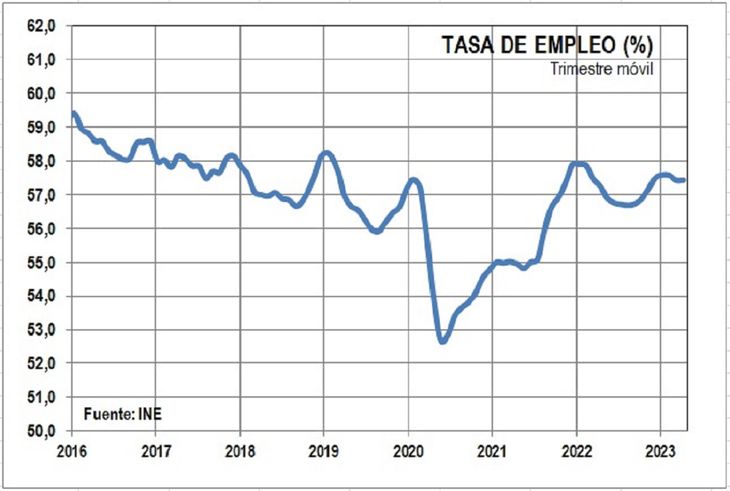There are 161,500 people in this condition, according to INE data. The employment rate also increased, remaining at 57.5%.
He National Statistics Institute (INE) released today the labor market data for the month of April, maintaining the trend of an increase in the number of people in the market, with a slight increase in the employment, but also unemployment.
The content you want to access is exclusive to subscribers.
This happens because although the number of jobs is growing, the number of people offering their work in the market is increasing even more (activity rate). This rate measures the number of people who are in the labor market (working or looking for a job) with respect to the population over 14 years of age. In April he went up to 63%that is to say that there 1 million 840 thousand people in the market, which implies 52,000 people more than a year ago (April 2022).


In turn, the employment rate rose two tenths and remained at 57.5%which means almost 1 million 679 thousand people working, almost 28 thousand people more than a year ago. Meanwhile, the unemployment rate in April rose to 8.8%which implies that there is 161,500 workers looking for work without finding it according to the estimation of the INEwhich is equivalent to almost 24,000 more than in April 2022.
INE employment rate.jpg

In summary, the labor market in Uruguay added 52,000 more people in the last year. There is 28,000 people more with work and 24,000 more unemployed.
Better Montevideo than the rest of the country
In the last year, the labor market data show differences in its evolution between Montevideo and the rest of the territory. In the case of the capital, employment has risen eight tenths in the last year, while in the rest of the country the increase is half (4 tenths). When unemployment is analyzed, in Montevideo the rise is 6 tenths of a percentage point, standing at 8.2%while in the rest of the territory it increased 1.3 points, reaching 9.1%.
This difference may be a consequence of the drought, which significantly affected agricultural production and therefore the services associated with said production: harvests, work, etc. The reduction in the volume of freight, fewer related activities (ports, professional ) as well as the lower agro-industrial activity due to the drop in production, have negative consequences for employment.
The exchange difference with Argentina is also having an impact, which diverts consumption to the neighboring country and reduces employment in commerce, especially on the coast.
Source: Ambito




